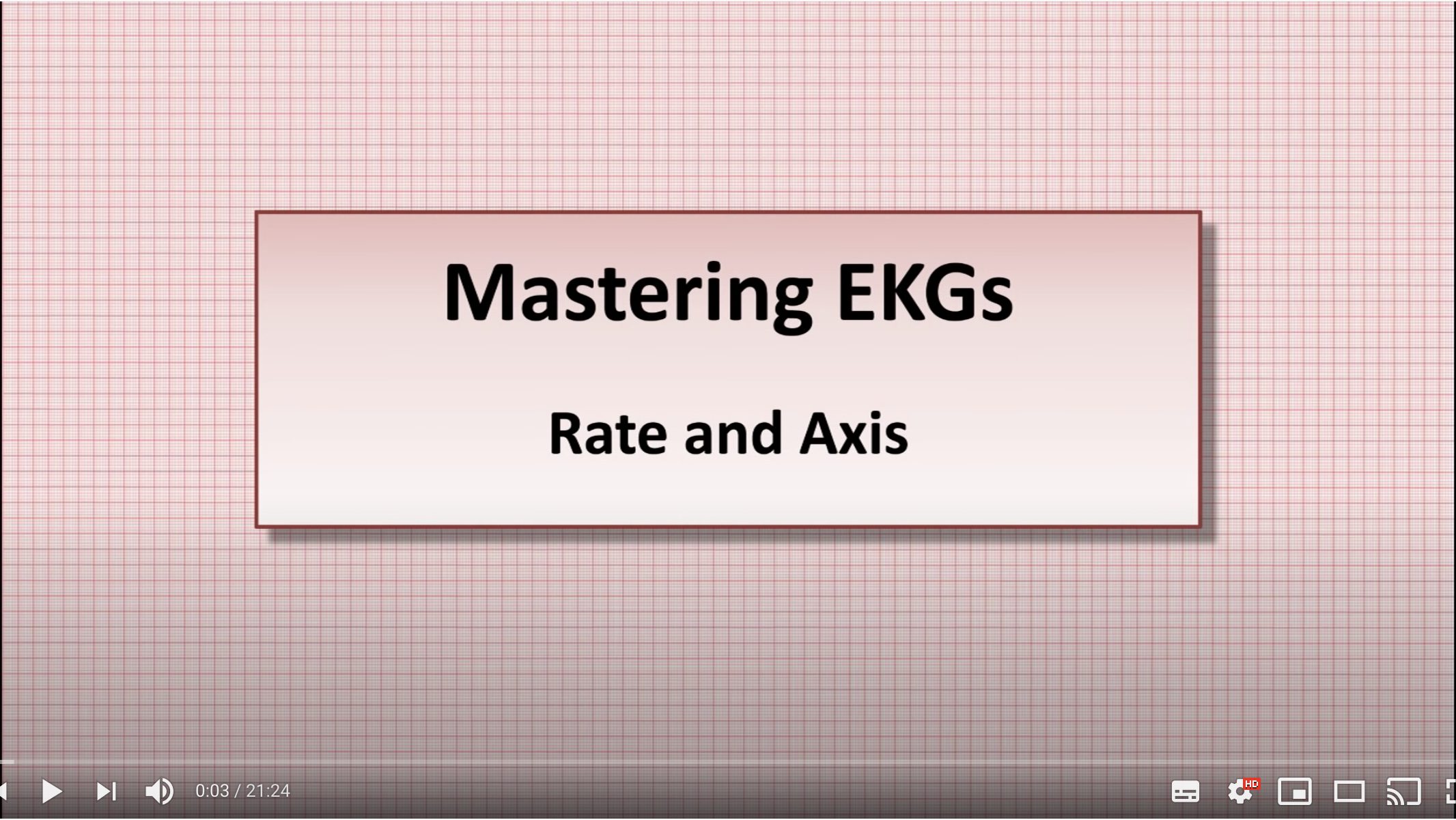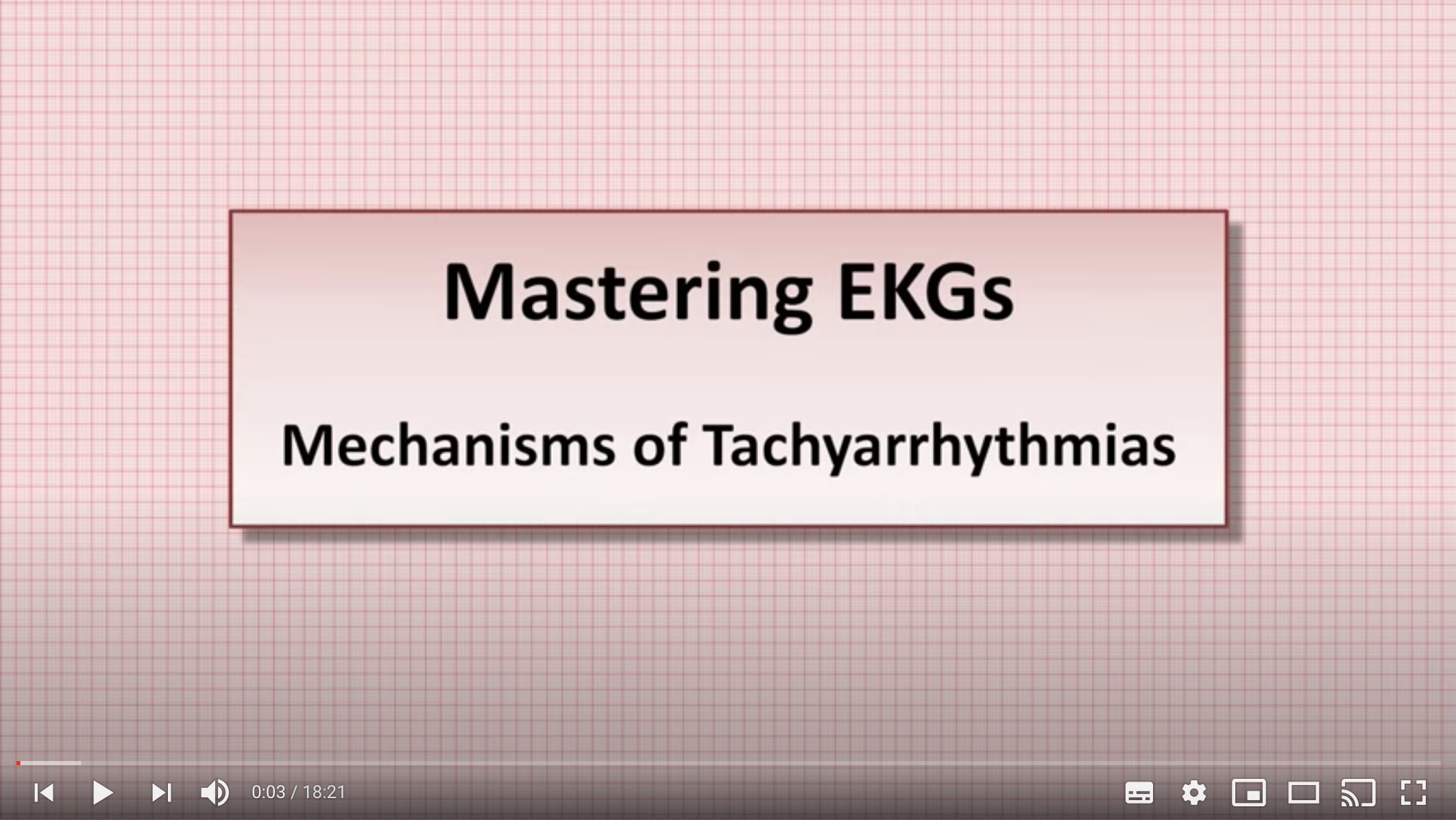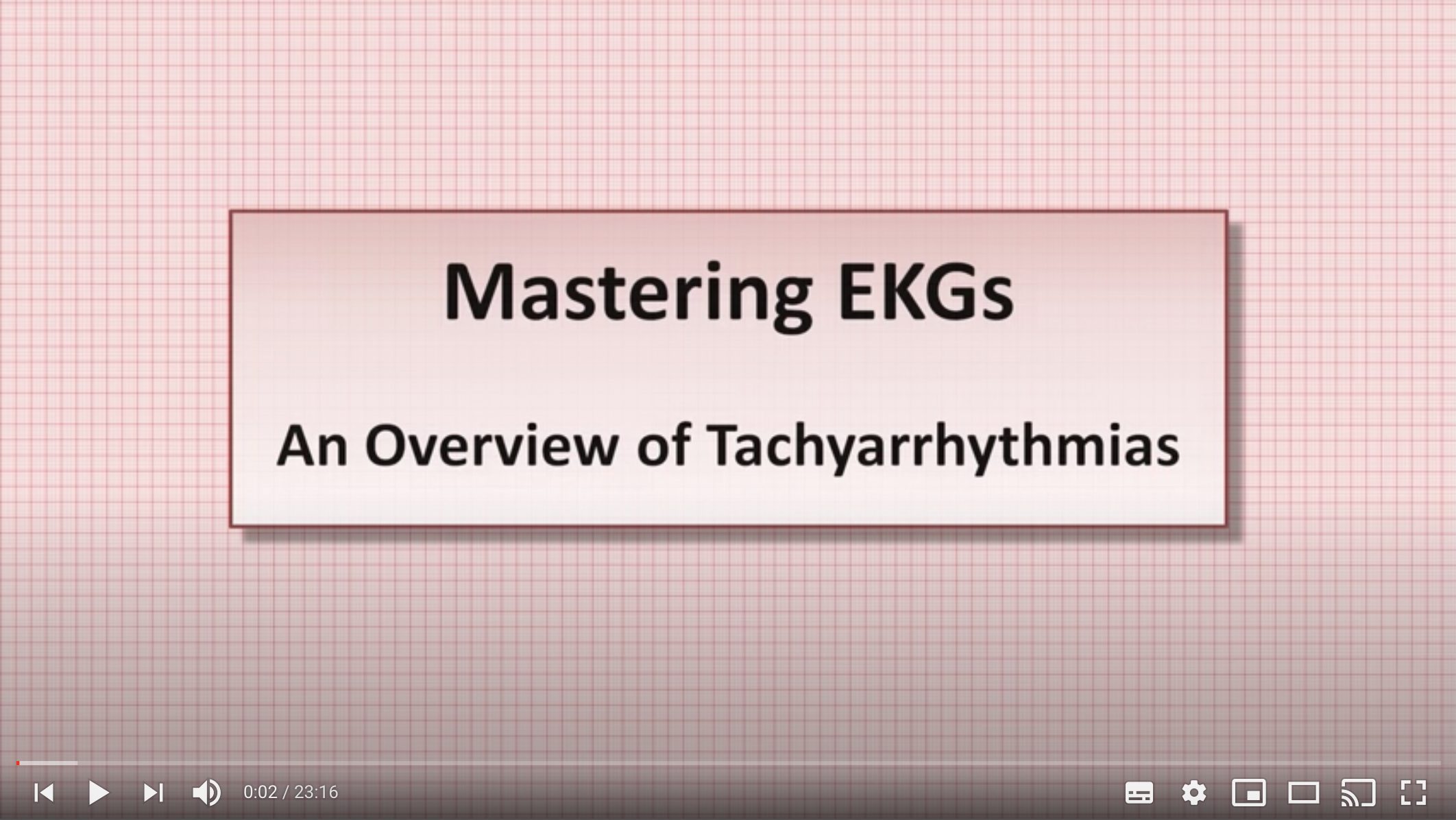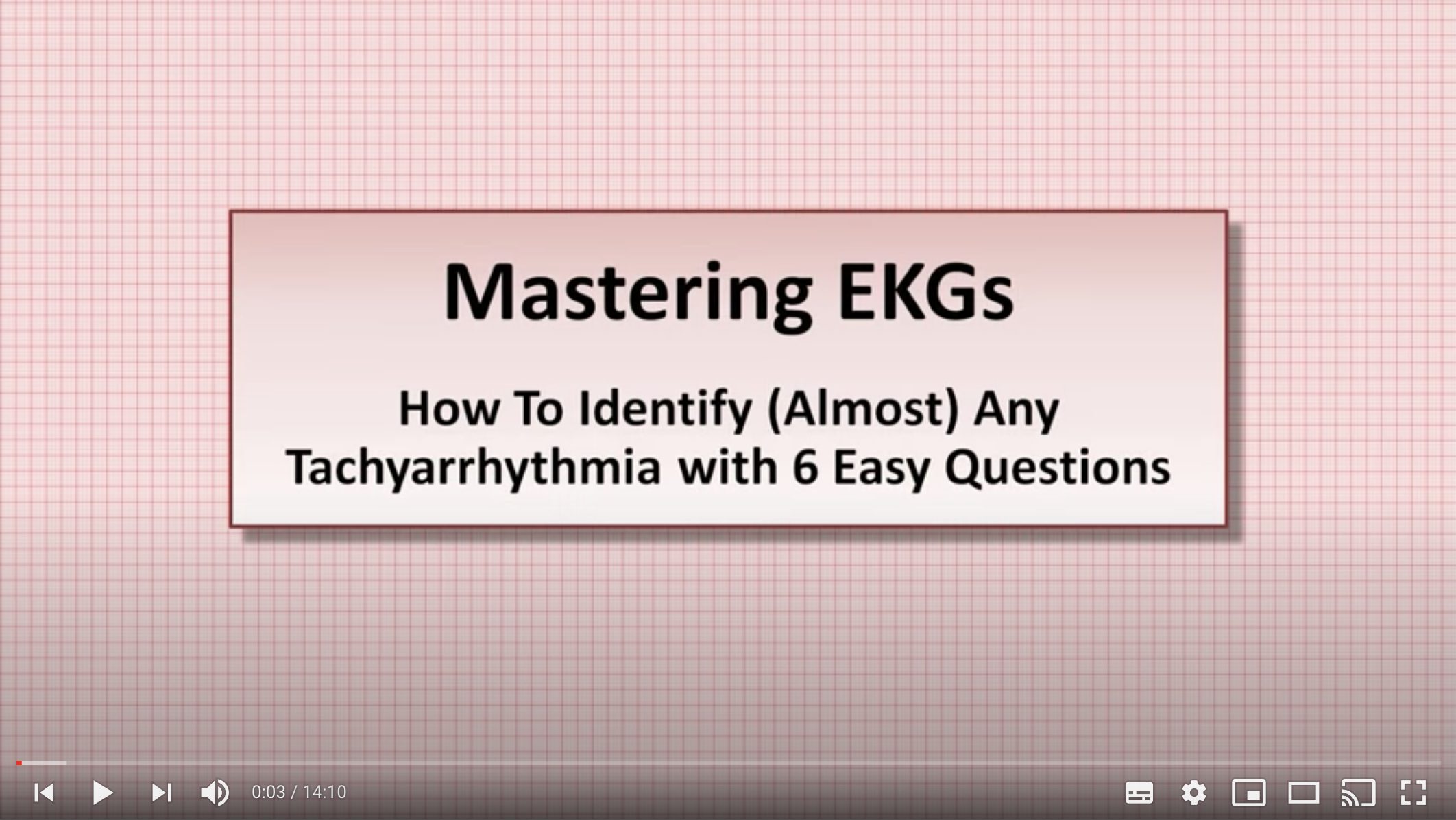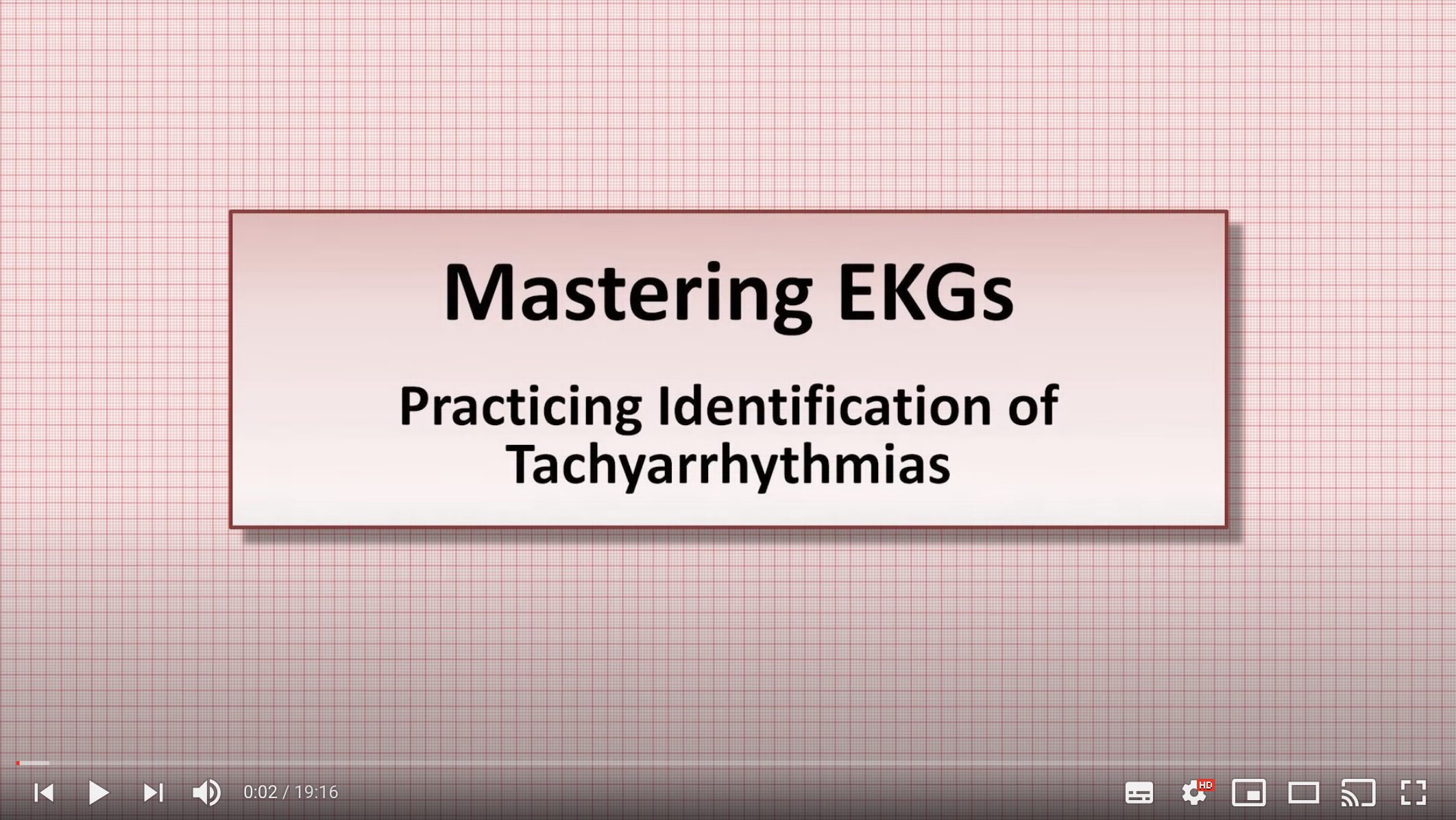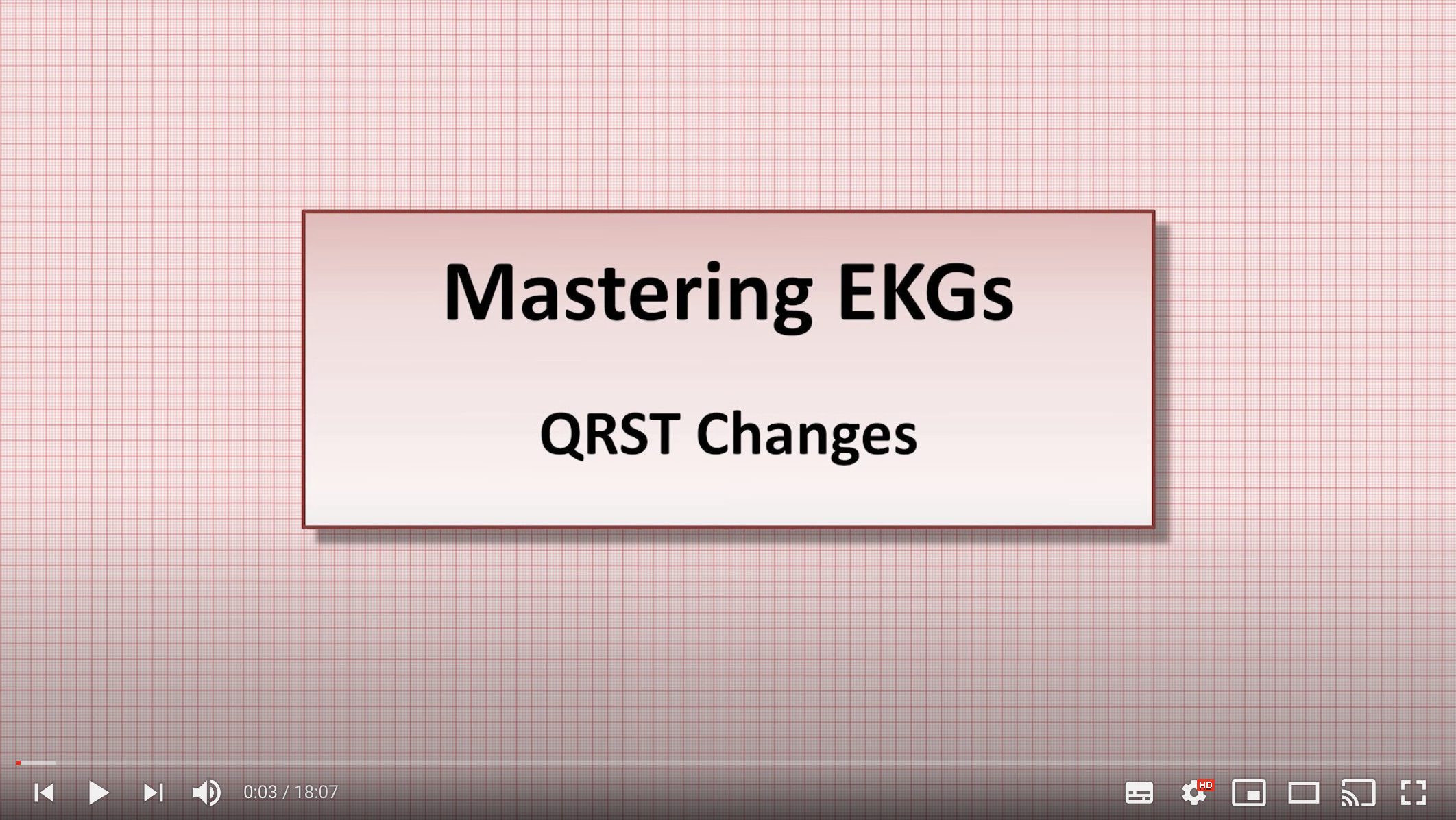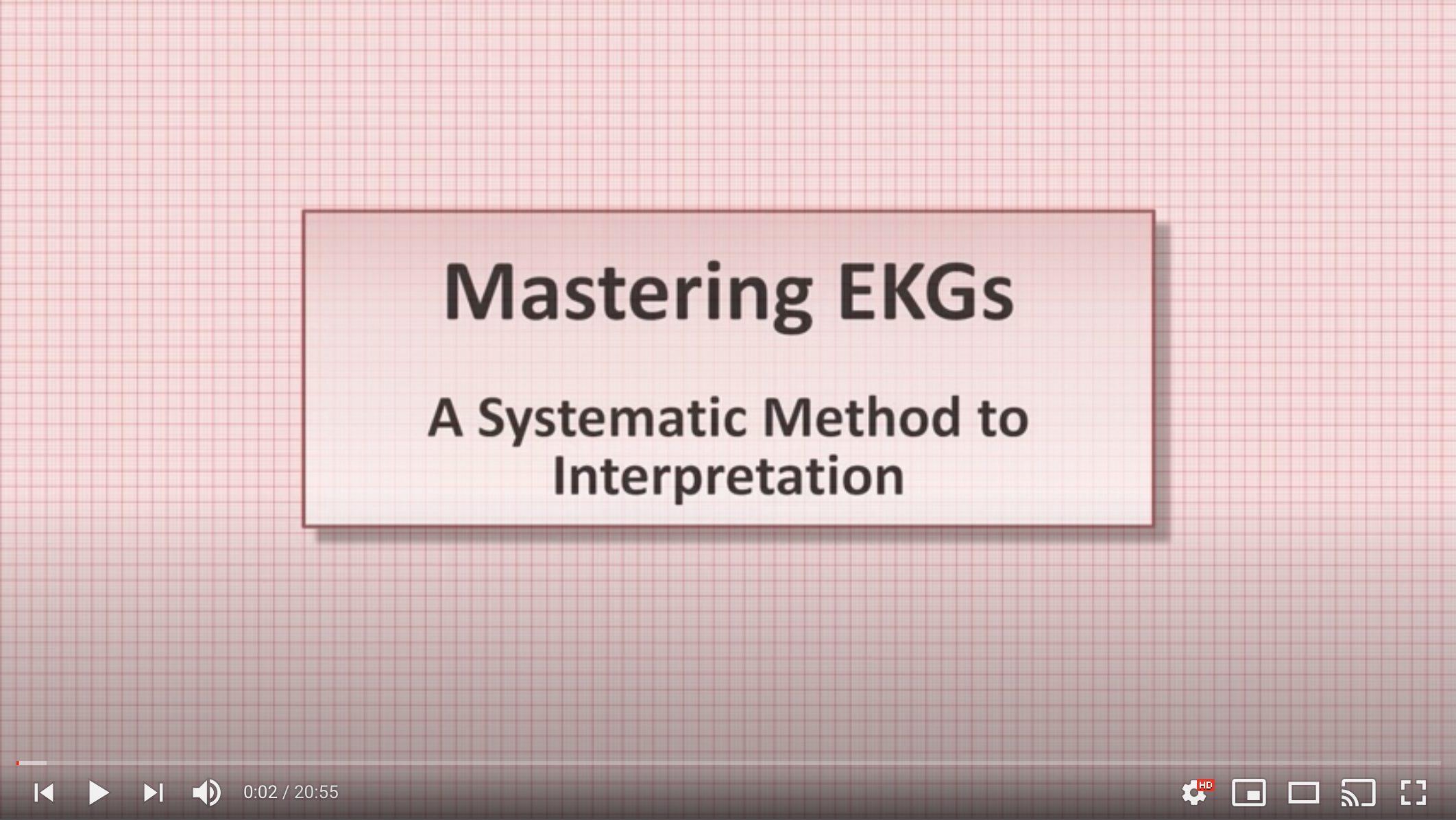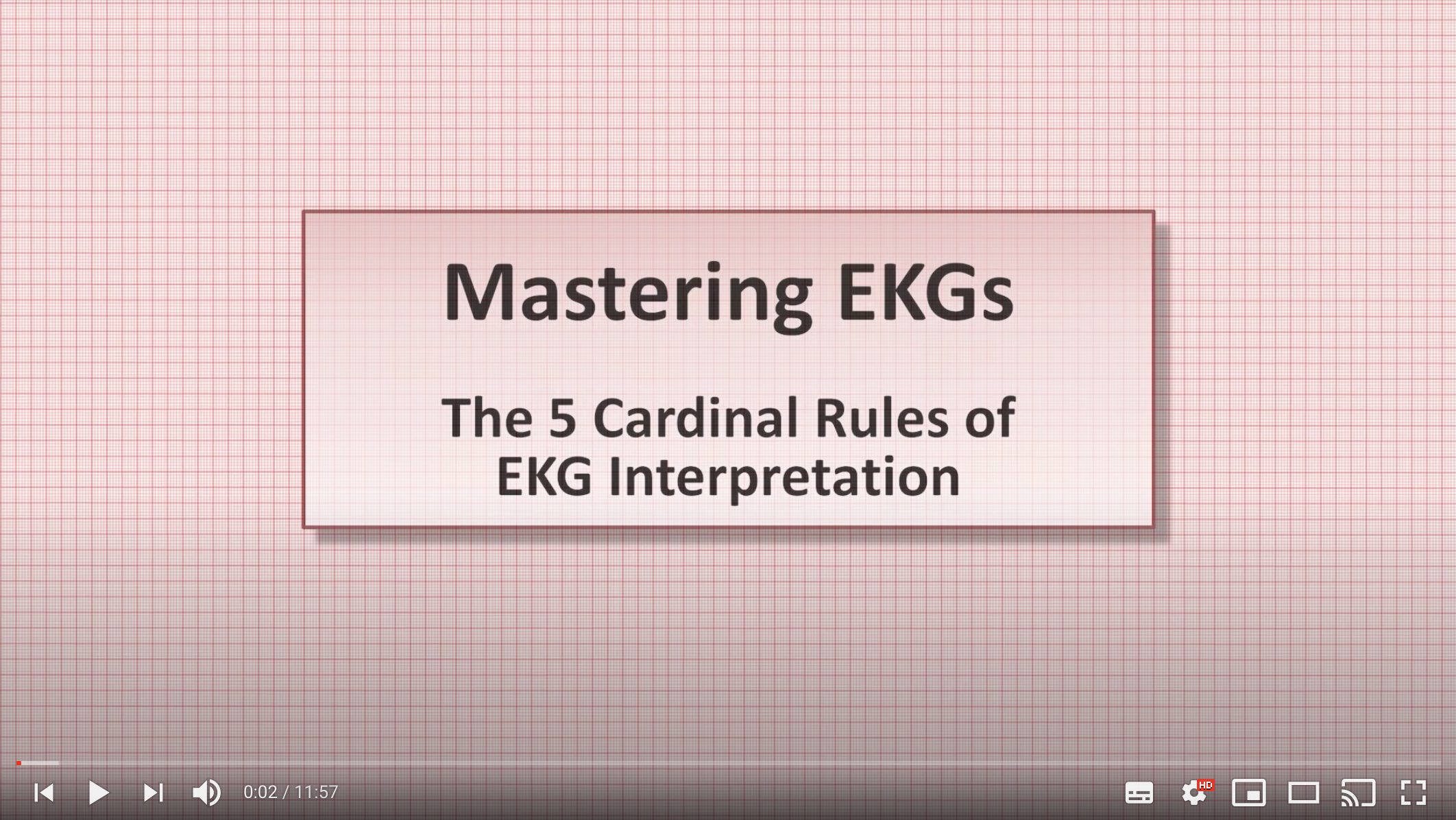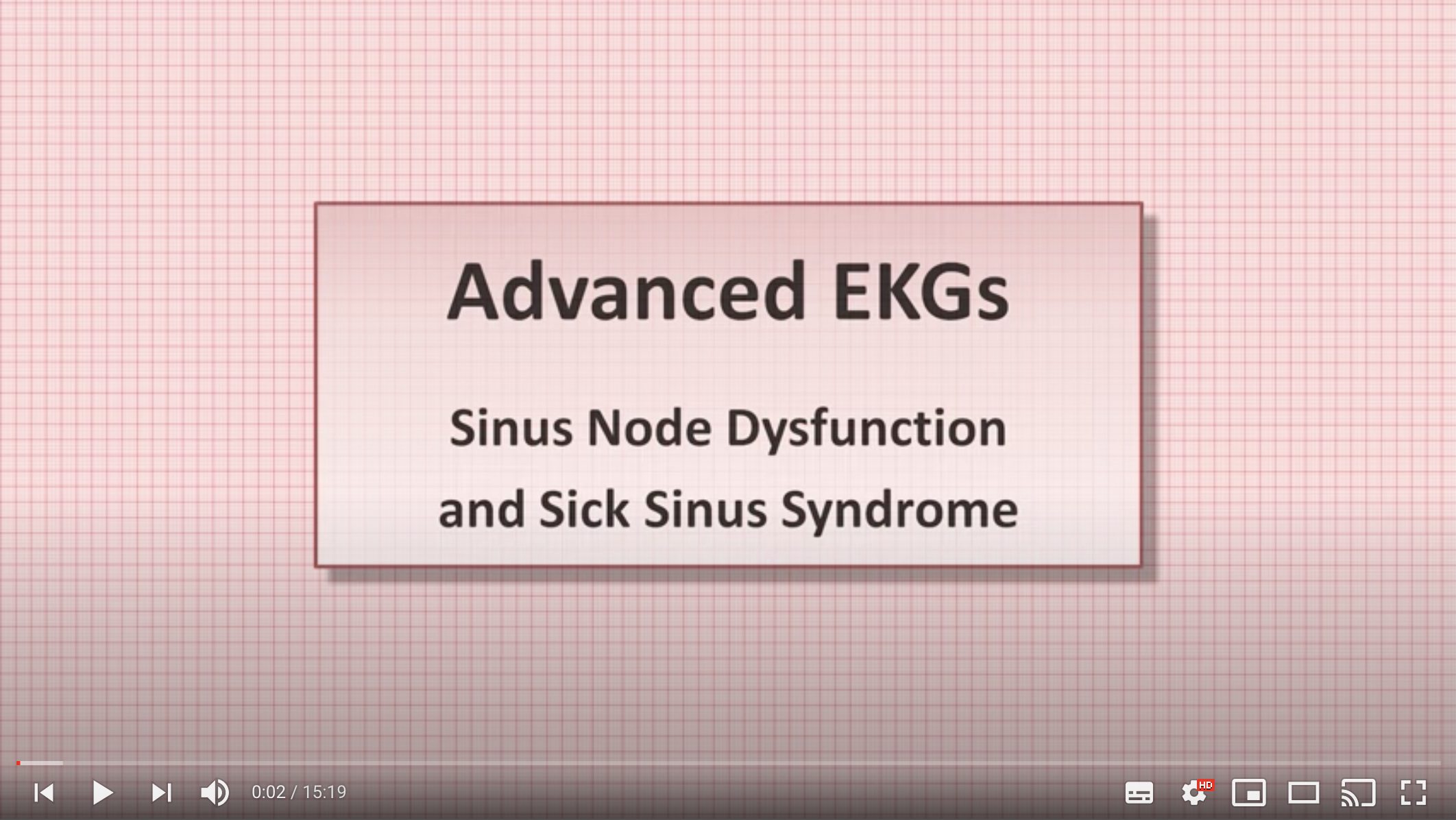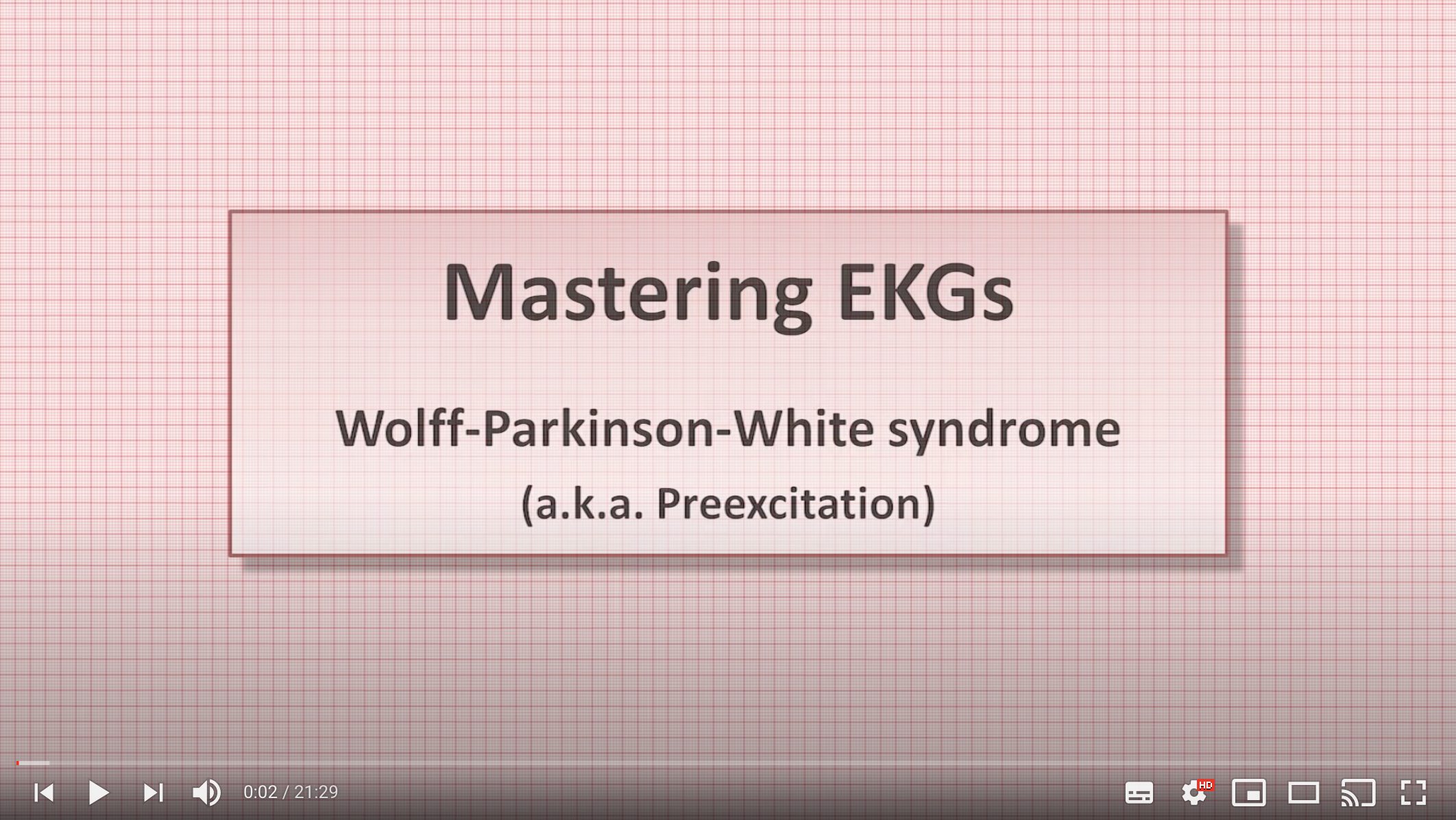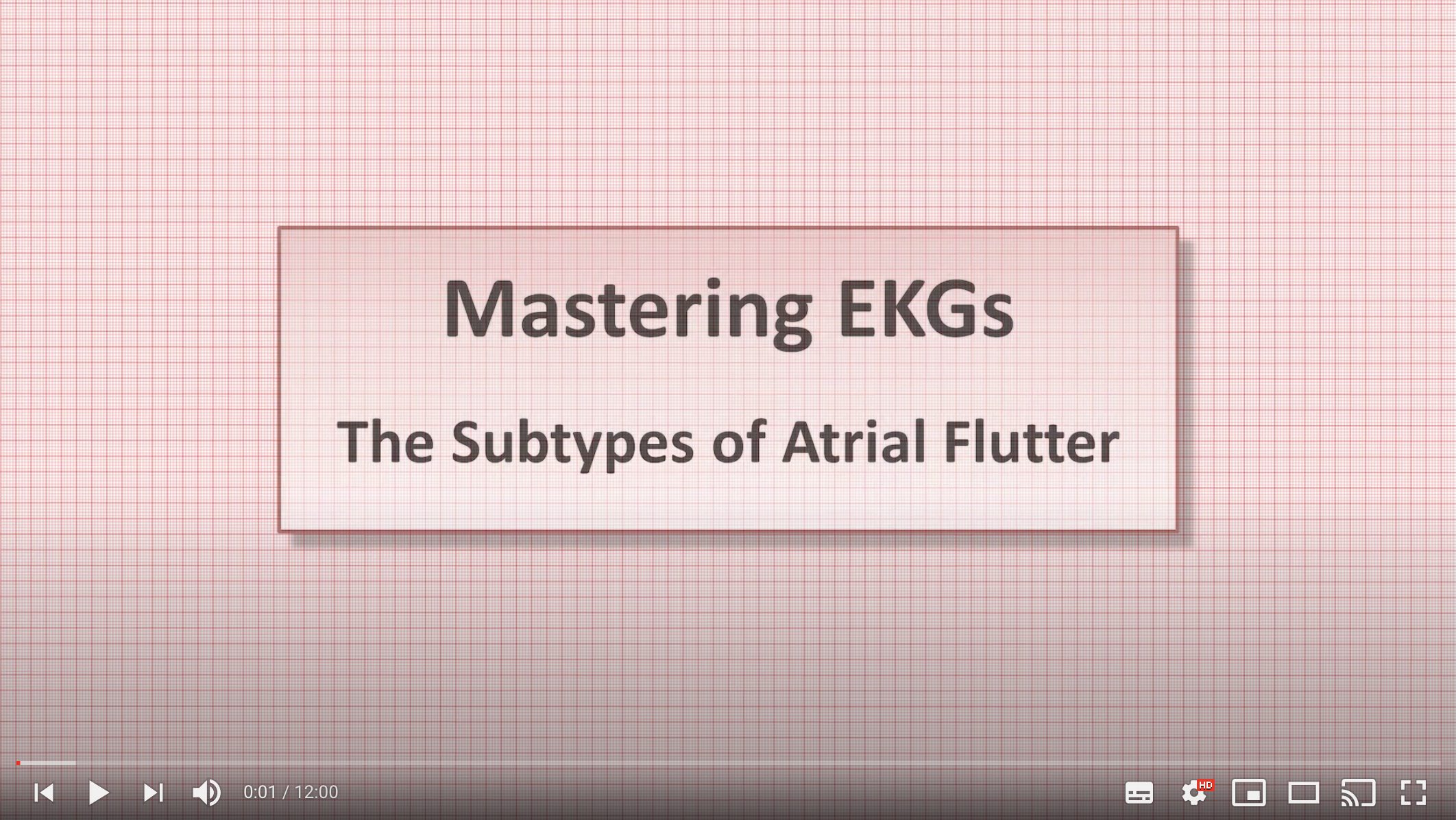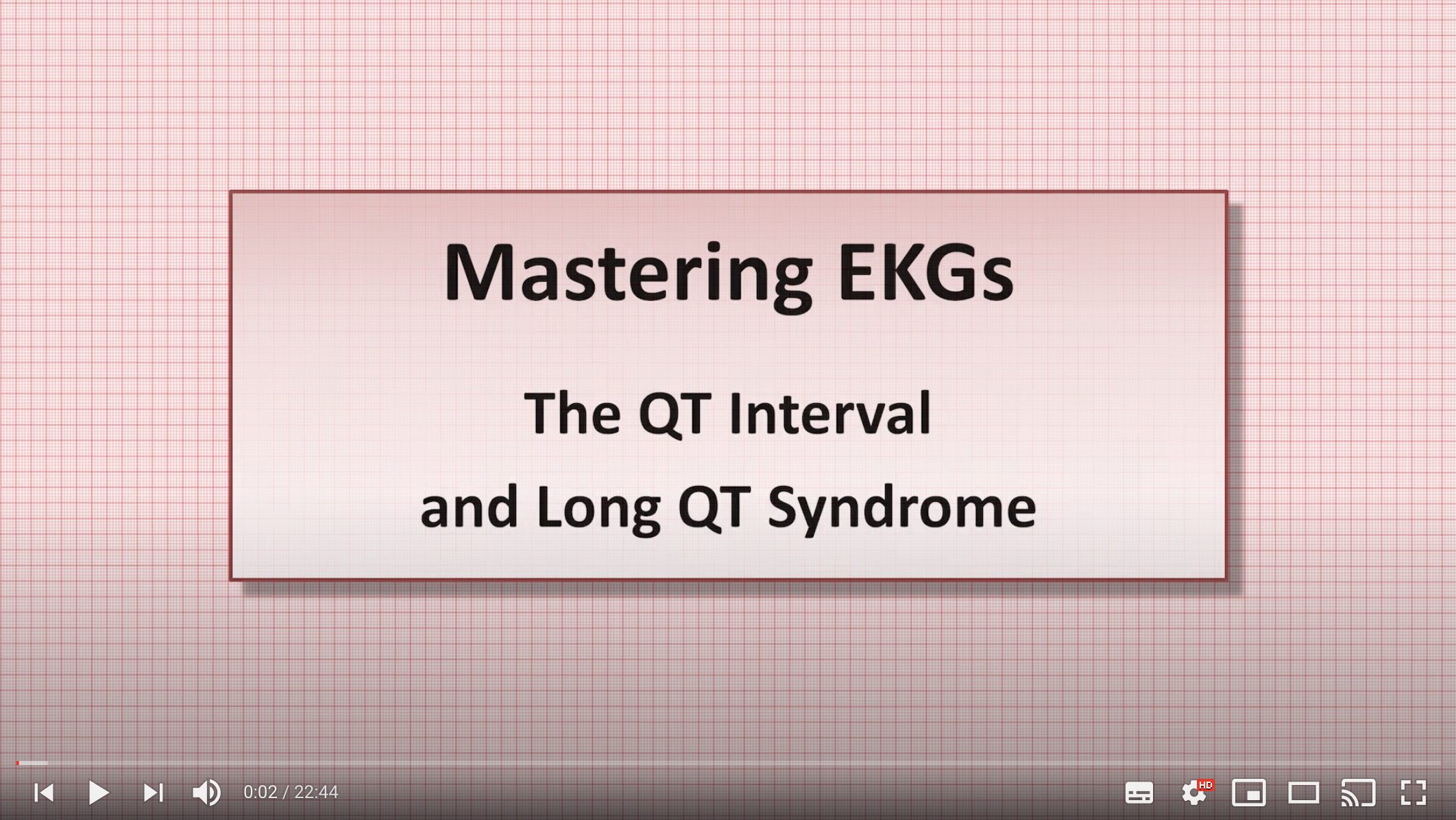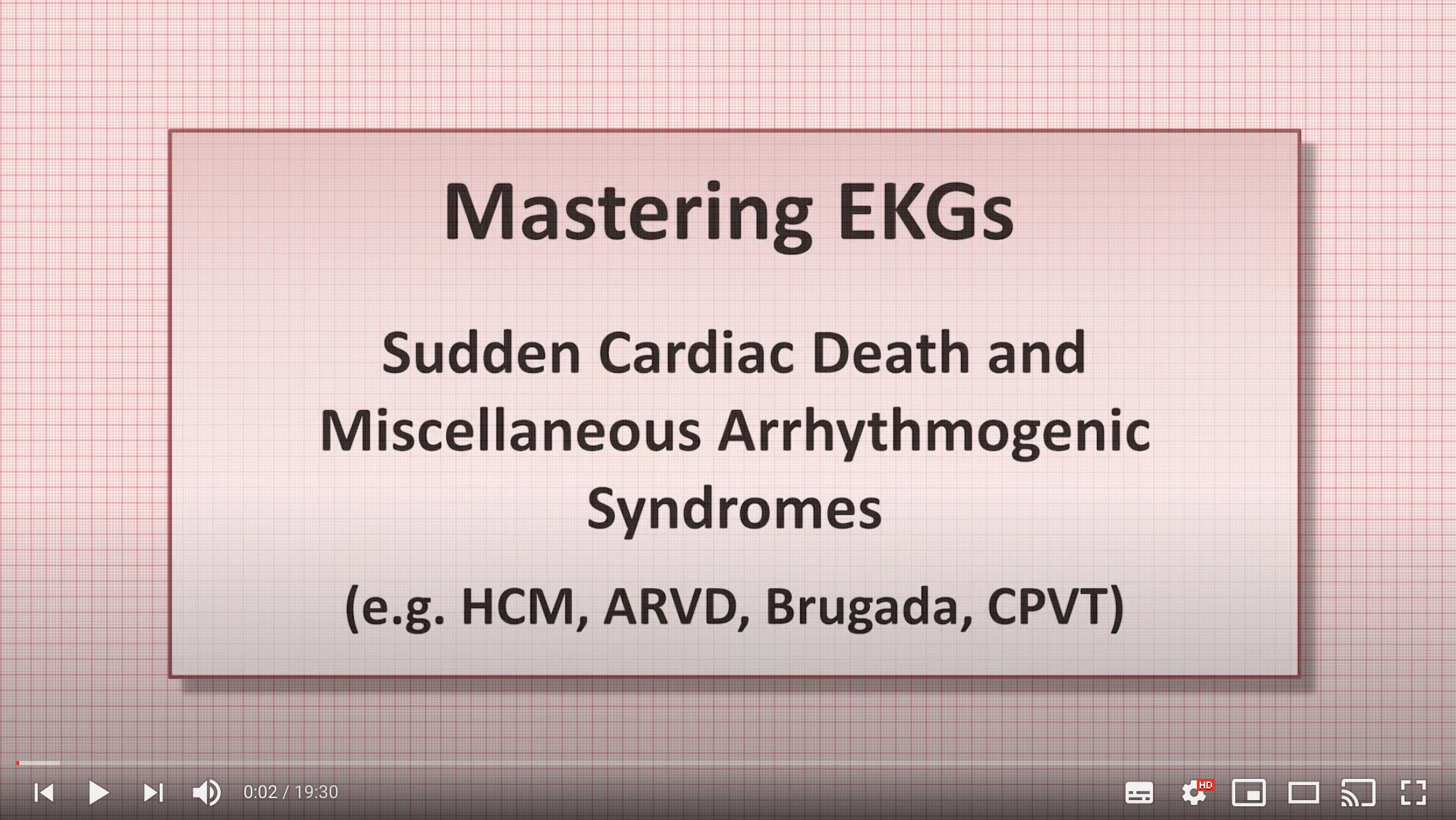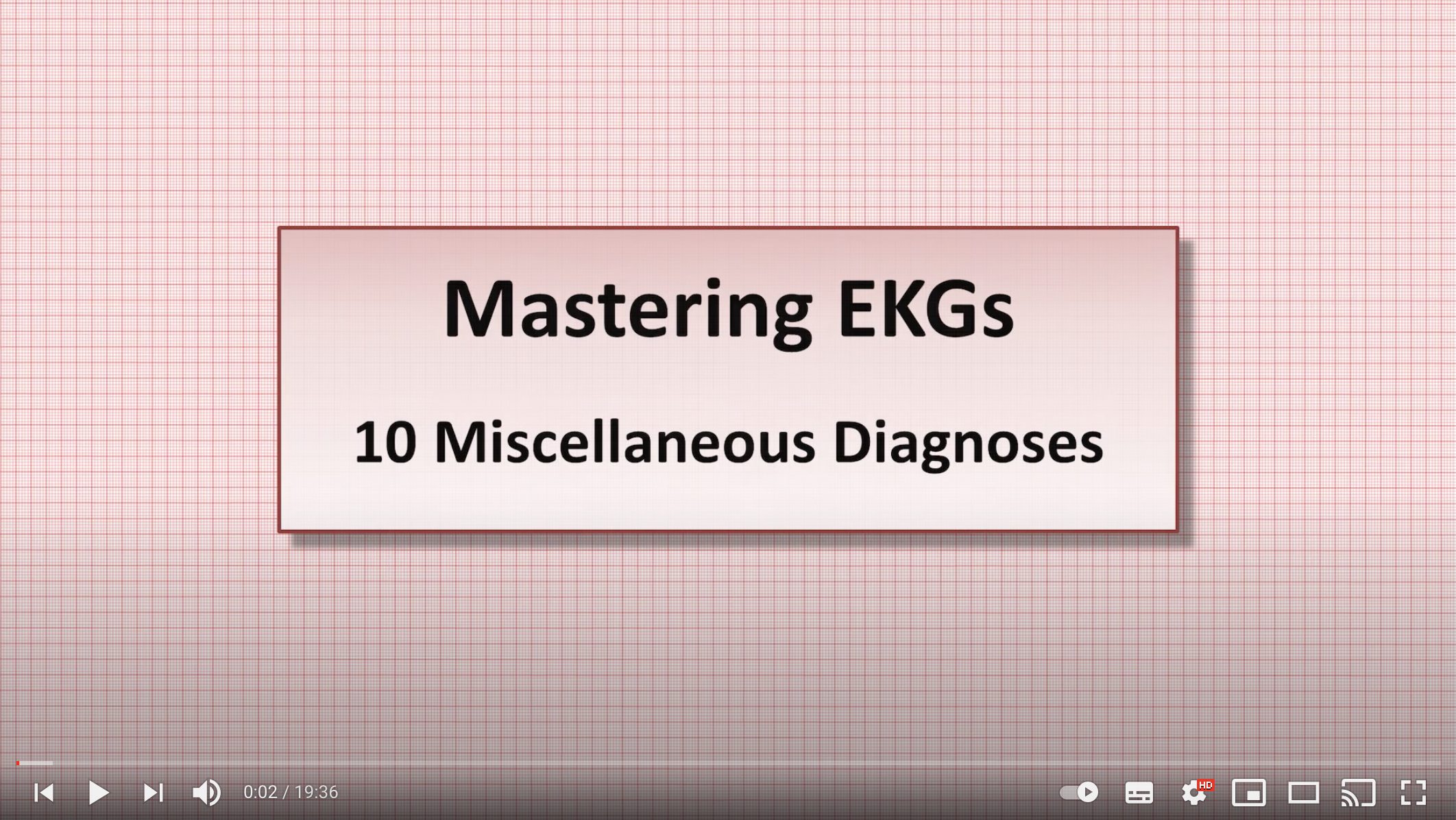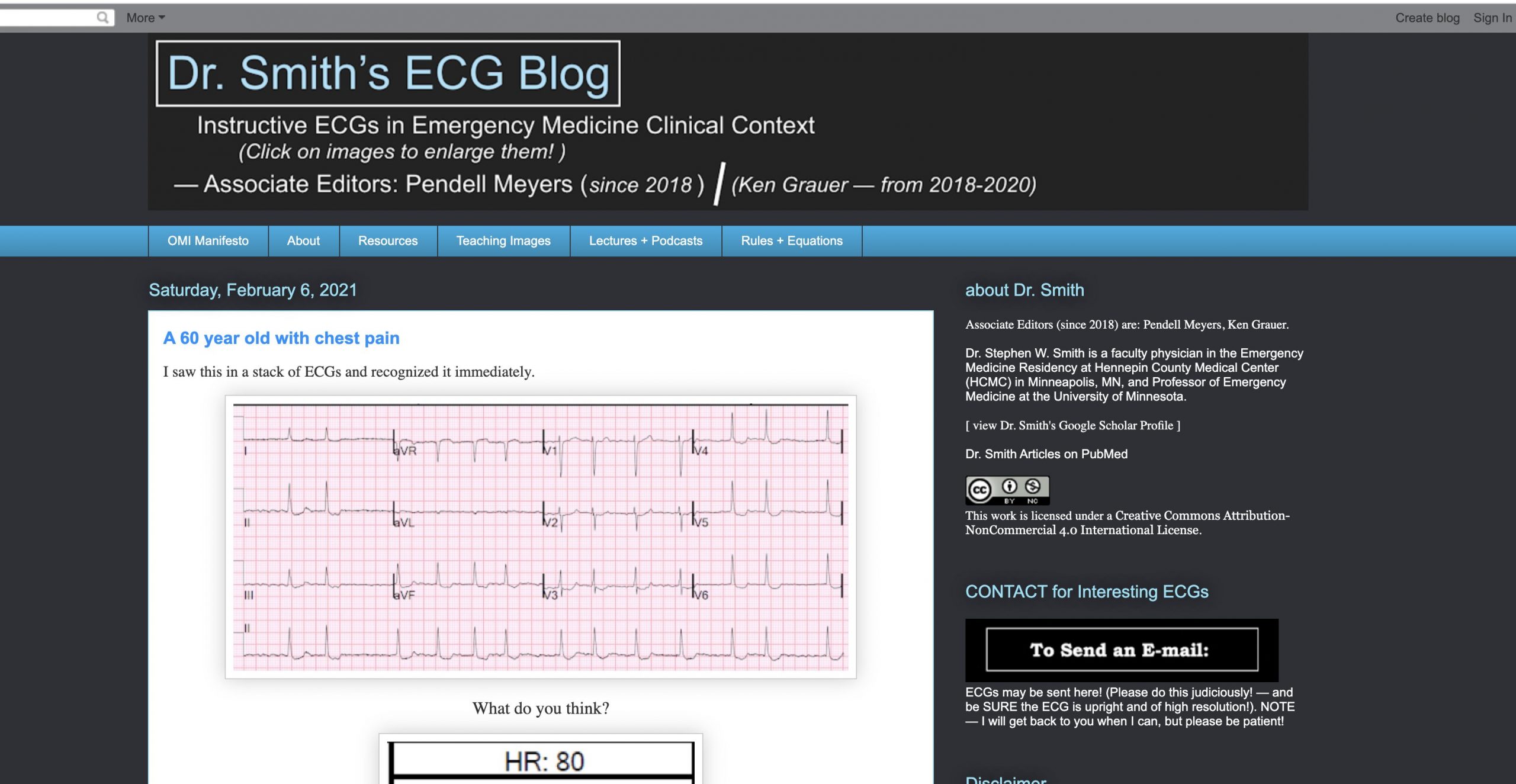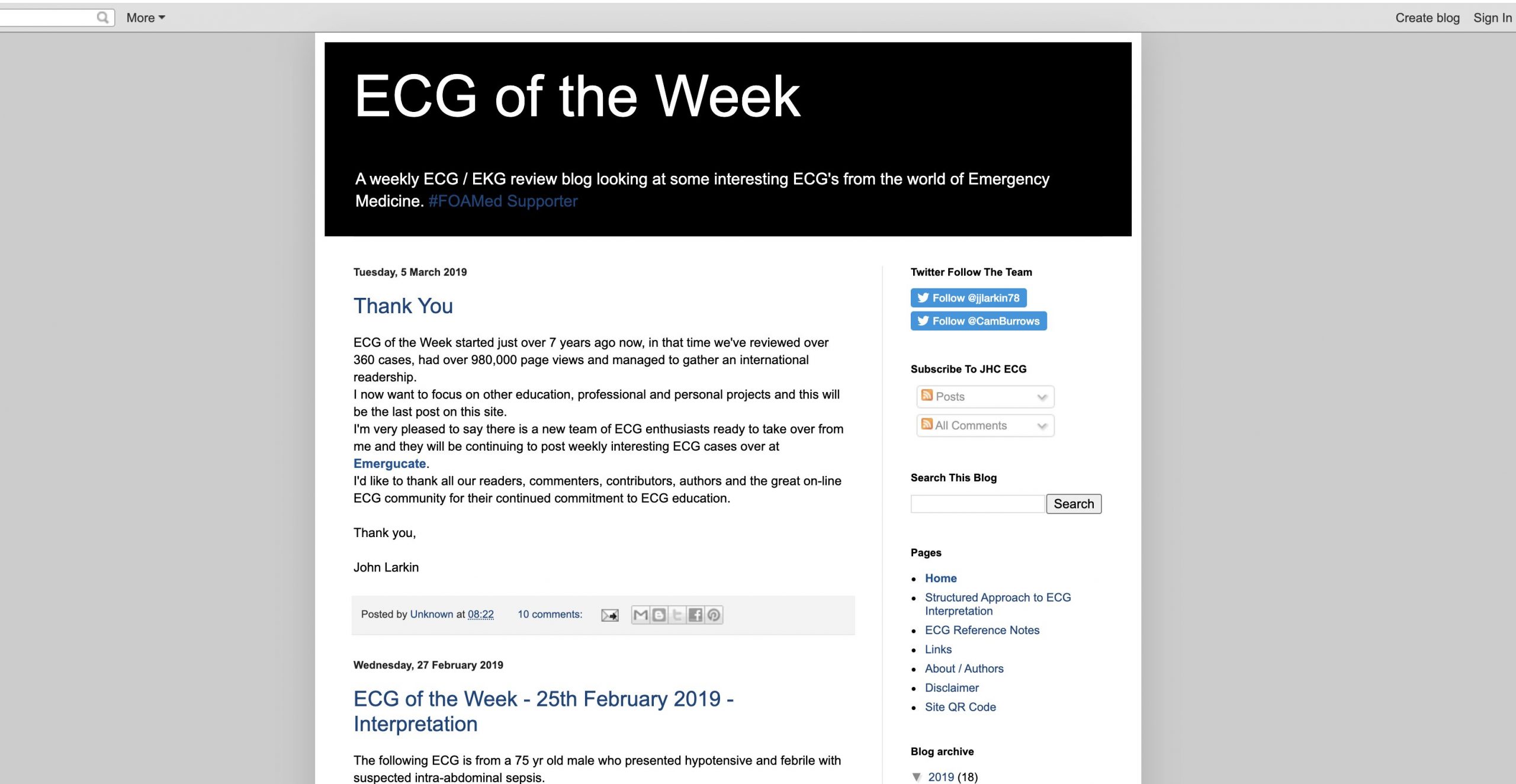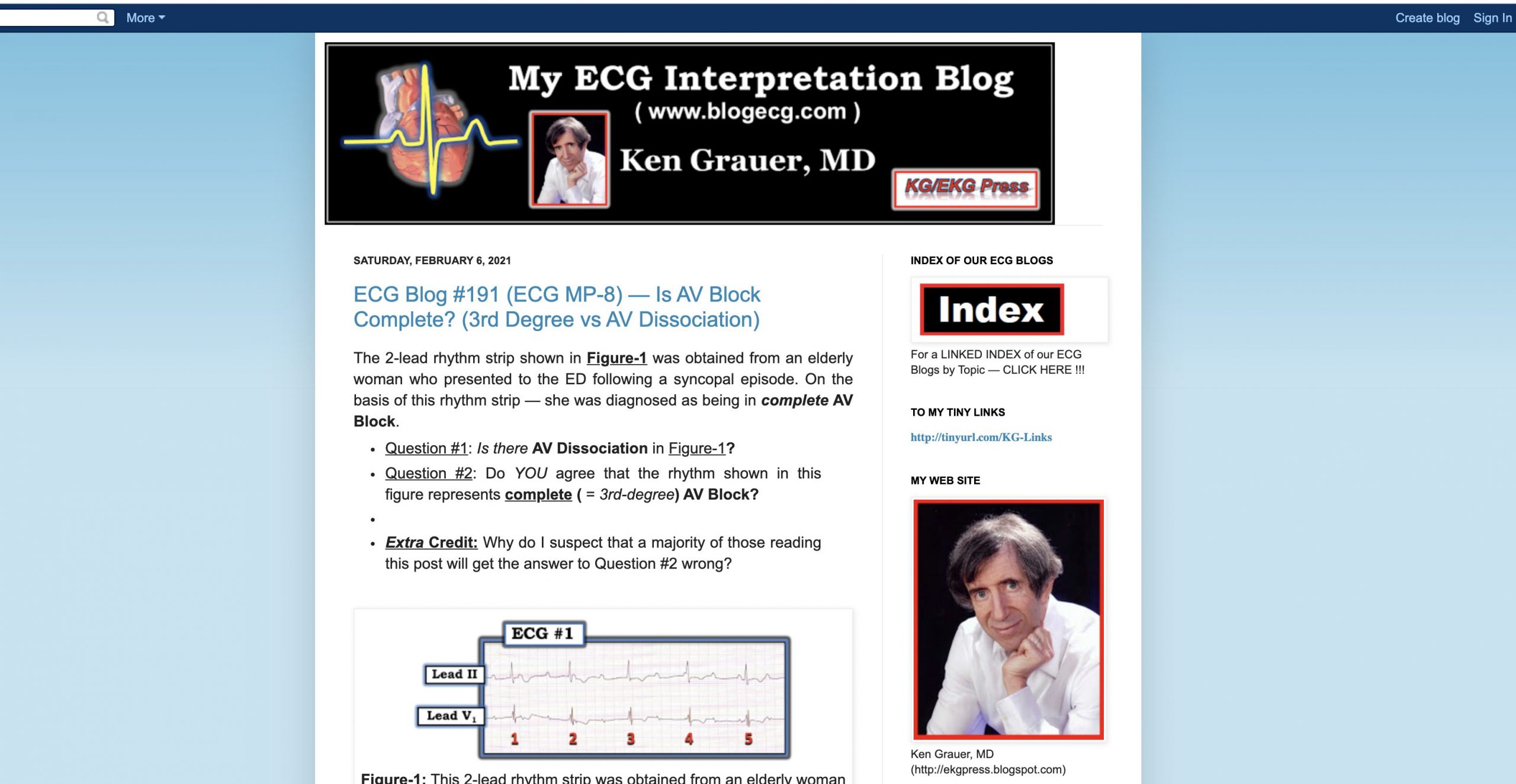FOAM ECG resources + blogs
Basic theory and interpretation of the EKG by Dr Eric Strong from Strong Medicine and Stanford University
1 Mastering EKGS – a course introduction
An introduction to a 30 video, complete course on EKG interpretation.
2 EKG textbook and website review
Some recommended EKG textbooks and educational websites.
3 Intro to EKG interpretation
4 Intro to EKG interpretation
Basic principles behind how EKG leads work, along with the proper placement of EKG electrodes.
5 Intro to EKG interpretation
How to determine heart rate and QRS axis on EKG.
6 Intro to EKG interpretation
Identification of atrial enlargement and ventricular hypertrophy on EKG.
7 Intro to EKG interpretation
Intraventricular conduction delays (IVCD), including bundle branch blocks, fascicular blocks, and non-specific IVCD.
8 Intro to EKG interpretation
3 major mechanisms of tachyarrhythmias: increased automaticity, reentry, and triggered activity.
9 Intro to EKG interpretation
Mechanisms, etiologies, and EKG characteristics of sinus tachycardia, AF, atrial flutter, multifocal atrial tachycardia, SVT, and VT.
10 Intro to EKG interpretation
11 Intro to EKG interpretation
10 examples of tachyarrythmias, along with explanations as to how to identify them.
12 Intro to EKG interpretation
EKG diagnosis of AV block, including the 3 degrees of block, and the 3 types of 2nd degree block and complete heart block.
13 Intro to EKG interpretation – QRST changes
Pathologic Q waves, R wave progression, ST elevation / depression, and T wave abnormalities.
14 Intro to EKG interpretation
EKG findings in MIs, including morphological classification, a determination of their age, and localization to region of the heart and likely culprit vessel.
15 Intro to EKG interpretation
EKG findings in MI, including morphological classification, determination of their age, and localization to heart region and likely culprit vessel.
16 Intro to EKG interpretation
Summary of an approach to EKG interpretation, including rhythm assessment, evaluation of QRS axis and morphology, and ST-T abnormalities.
17 Intro to EKG interpretation
Never trust the computer, use a systematic method, consider clinical context, compare current EKG to prior, and EKG is one more piece to incorporate into the differential diagnosis.
18 Intro to EKG interpretation
Review of basic EKG interpretation and cardiac auscultation, using clinical cases to demonstrate connections between patient symptoms, EKG findings, and abnormalities of auscultation.
19 EKG and Heart Murmur Review – Part 2
Part 2 of a case-based review of introductory EKG interpretation and cardiac auscultation.
20 Advanced EKG
Sinus node dysfunction including sinus arrhythmia, SA exit block, sinus pauses, sinus arrest, sinus bradycardia, chronotropic incompetence, sick sinus syndrome, and the tachy-brady syndrome.
21 Advanced EKG
An overview of Wolff-Parkinson-White (WPW) syndrome, including pathophysiology, EKG characteristics, associated arrhythmias, and how to localize the accessory pathway.
22 Advanced EKG
An overview of the major subtypes of atrial flutter, including typical (counterclockwise) flutter, reverse typical (clockwise) flutter, and atypical.
23 Advanced EKG
An overview of the nuances involved in measuring QT interval, a review of long QT the etiologies and features of the potentially fatal arrhythmia torsades de pointes.
24 Advanced EKG
4 miscellaneous inherited arrhythmogenic syndromes, including clinical manifestations and genetics, in addition to EKG findings.
25 Advanced EKG
A discussion of the advanced arrhythmia concepts of overdrive suppression, concealed conduction, excitable gaps, and entrainment.
26 Advanced EKG
A discussion of the typical features of 10 miscellaneous EKG diagnoses, including hyperkalemia, pericarditis, parasystole, lead reversal, dextrocardia, and more…
A selection of blogs and online textbooks to take your ECG interpretation and understanding to the next level…
Dr Smith’s ECG blog
Dr. Stephen W. Smith is a faculty physician at Hennepin County Medical Center and Professor of Emergency Medicine at the University of Minnesota.
ECG of the Week
A weekly ECG / EKG review blog looking at some interesting ECG’s from the world of Emergency Medicine.
My ECG interpretation blog
ECG interpretation blog by Dr Ken Grauer.
ECG Guru
ECG GURU is a site for instructors who teach ECG and other cardiac topics, and a place to share teaching materials and resources.





